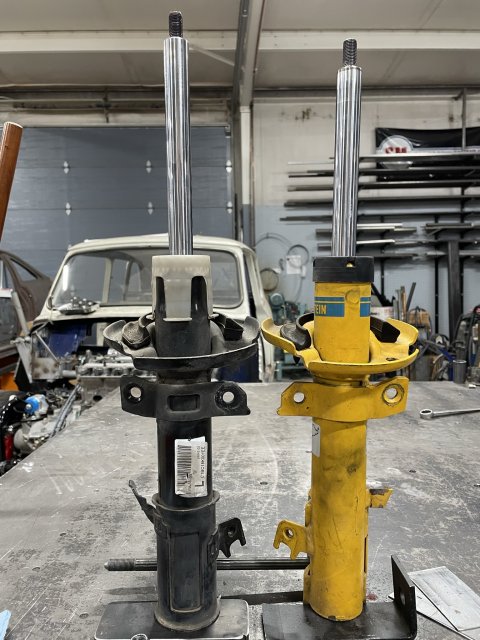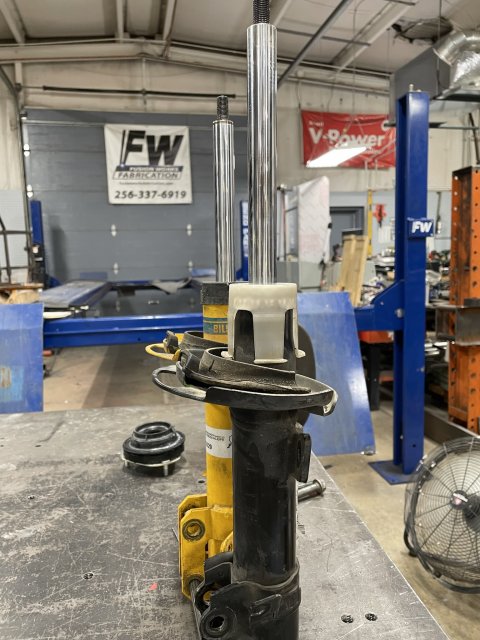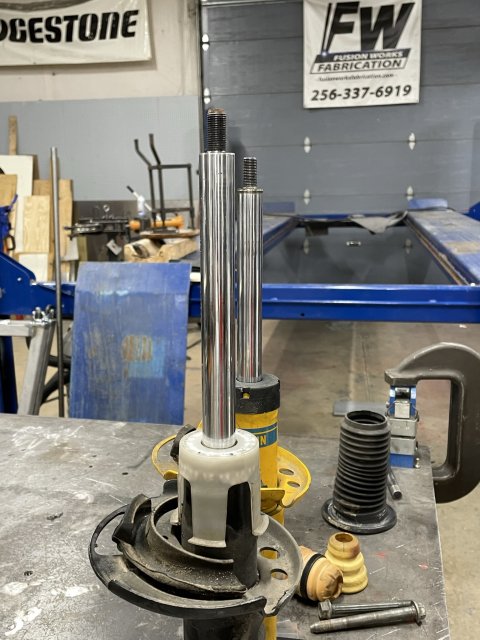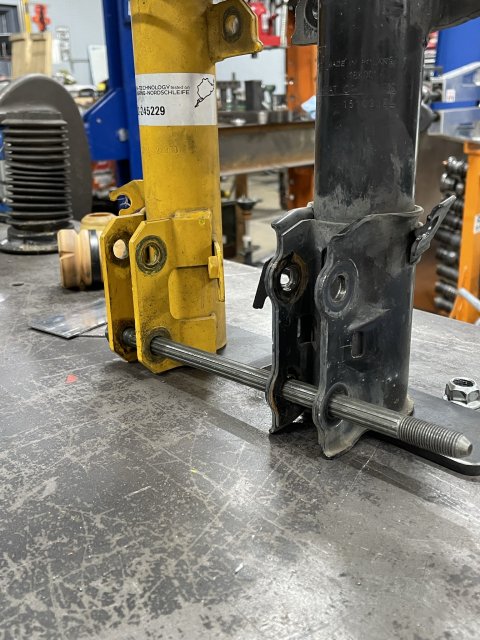I don't disagree with you on the preloaded spring. It won't move until you overcome the force of the compressed spring.
Apparently we are talking past each other.
The discussion only refers to ride height. The question is does ride height change if you use the same spring on two different dampers? B6 vs B8. I claim that B8 damper with the stock spring will have a higher ride height than the B6 damper with the same spring. You claim that it won't?
All other things being equal (damping, gas pressure, lower spring seat location), I'm claiming that just changing the "starting" shock shaft length by an inch will not change the ride height once the damper compressed to the operating range of its stroke.
If there *is* a difference in height between the two, there has to be some other difference between B6/B8 besides the shock shaft, or else some manufacturing variation between the dampers you have, like maybe lower gas pressure. You could try measuring the initial gas force required to begin moving the shocks you have (B6/B8/Stock?) - it may be different if you are in fact seeing a ride height change just from shocks, either from variation from the factory, or leakage over time, if say your B6's are significantly older.
If you look at the spring stack that holds the car up off the ground, you'll see that it goes like this:
1) Wheel/Tire
2) Hub/Knuckle
3) Lower shock body to lower spring seat
4) Compressed spring
5) Top hat/bearing/strut tower
The bumpstop and shock shaft are in parallel with that stack. The only way the shock shaft can affect the static height is by reducing the load on the spring via gas pressure. That's it. If not for the fact that it would become laterally unstable, with the car sitting on the ground, you could unbolt the shock shaft at the top, and push it down using only the force needed to overcome gas pressure (the valving contributes nothing when the piston isn't moving), nothing more. If there were zero gas pressure in the shock, the ride height wouldn't change at all with the damper completely disconnected. Doesn't matter what the shock shaft length starts out as.
If you're really curious and want to break out "SCIENCE", you could do this experiment on the rear axle because its more stable (the spring and damper are divorced so it makes a conceptually better example). Keep the wheels on, remove the rear shocks completely and lower the car onto the springs.
The only change in static height will be from the gas force in the shocks, which you could measure and subtract out from your ride height measurement, or do something clever like measure the gas force and put equal weights in the trunk near the rear shock towers (but only when the shocks are installed to cancel out the gas force, and offset by the motion ratio, which is about 1.2).
You can even drive it around like this, and you'll find that the ride quality will actually be pretty good with zero high speed damping, until you make a hard turn or go over a big whoop that makes the car body move or bounce (at which it will be pretty bouncy)

![Wink [wink] [wink]](/images/smilies/wink.gif)



